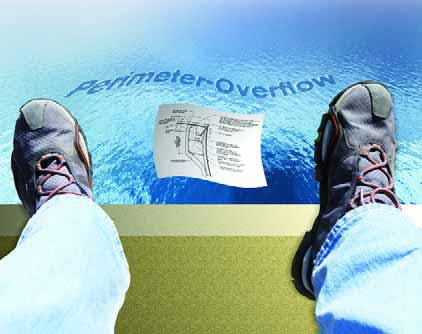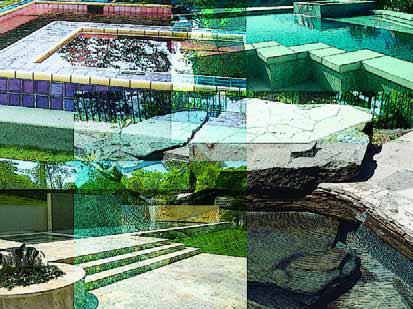details
You don’t have to be a physician to know that watershapes offer profound benefits when it comes to health, fitness and wellness. Indeed, most people know that swimming and other forms of activity in water are, along with hydrotherapy, among the healthiest of all activities known to us mere mortals. Unfortunately, and for reasons that escape me, promoting the value of that connection has never spent much time on our industry’s front burner. My own curiosity about the topic recently led me to seek published resources, and I’m sad to say that my search hasn’t yielded much. It reminds me of my early days in this industry and a time long ago when I craved books that would inspire my design work: For a long time, there wasn’t much to find – but that’s all changed now. My hope is that the case with water-related health and wellness is the same and that it will soon become a
As we discussed last month, perimeter-overflow details are among the most distinctive and challenging of all features in today’s custom pool market. In March’s column, we defined the different types of these edge designs, then described the complex, exacting process of building a knife-edge overflow system. This time, we’ll get into the hydraulic finesse needed to make these systems work. This includes everything from calculating bather surges to sizing the plumbing and surge tanks needed to make these effects function
With every new project, we always strive to create unique watershapes that reflect particular clients’ wants, needs, dreams and imaginations. What this means, given the fact that every client is an individual, is that no two of our pools are ever quite the same. In the case described in this article, for example, the clients’ distinctive personalities led us to create something that’s more like a waterpark than a residential pool/spa combination. In a very real sense, it reflects their personalities and a sense of the magic they find in certain chapters of our history – a special space for them to enjoy with their children. The clients purchased the newly built home on a hill overlooking the ocean in
It seems strange to write these words: In this issue, please find the last of David Tisherman’s “Details” columns. After seven years, he has decided that these monthly discussions have run their course and that it’s time to step aside. During those seven years, David has
It all started in 2002, when I was contacted by an architect who’d been retained to design a recreational complex for a huge estate in a wealthy Chicago suburb. I knew at the time that this would be big, but in those early days I had no clear idea exactly what it would ultimately entail. It’s a familiar story: Before the call came in, the homeowner had spoken with a number of pool-contracting firms in the area and had visited a number of projects that failed to impress her. The unusual thing is, at the time she called I was focused exclusively on pursuing large-scale commercial projects and waterparks and didn’t see anything even approaching a
For the past year and more, we’ve worked our way step by step through the many processes involved in designing and installing quality residential watershapes, starting from the first contact with a prospective client and working our way through, in the last two months, to the application of well-selected interior finishes. A concern I’ve always had with this step-wise approach is that it makes too many of these operations seem as though they happen in isolation and that decisions about design and materials and finishing touches are made as
In my role as editor of WaterShapes, I’m often approached with tales of utterly amazing projects in the works – but still months or even years away from completion. That can be frustrating at times, because the only way to
It's rare in our fast-paced world when you get the chance to work closely with clients over an extended period of time – and in this case we took full advantage of the opportunity: All the way through the evolution of the project, the couple gave me voluminous information about what they wanted and enabled me not only to understand and deliver what they were after, but also allowed me in many instances to exceed their expectations. I had worked with him before on
Last month, I entered into a discussion of the emergence of a whole range of beautiful finish materials that have helped (in my humble opinion) turn watershaping into an art form. My focus there was on glass and ceramic tile; this time, I want to turn the same sort of attention to plaster and exposed aggregates – huge additional factors in the industry’s ongoing creative momentum. Before I begin, let me draw an important distinction: The artistry in watershaping is not so much based on the types of materials we choose or how special or costly they might be; instead, it has everything to do with





















Forward Motion